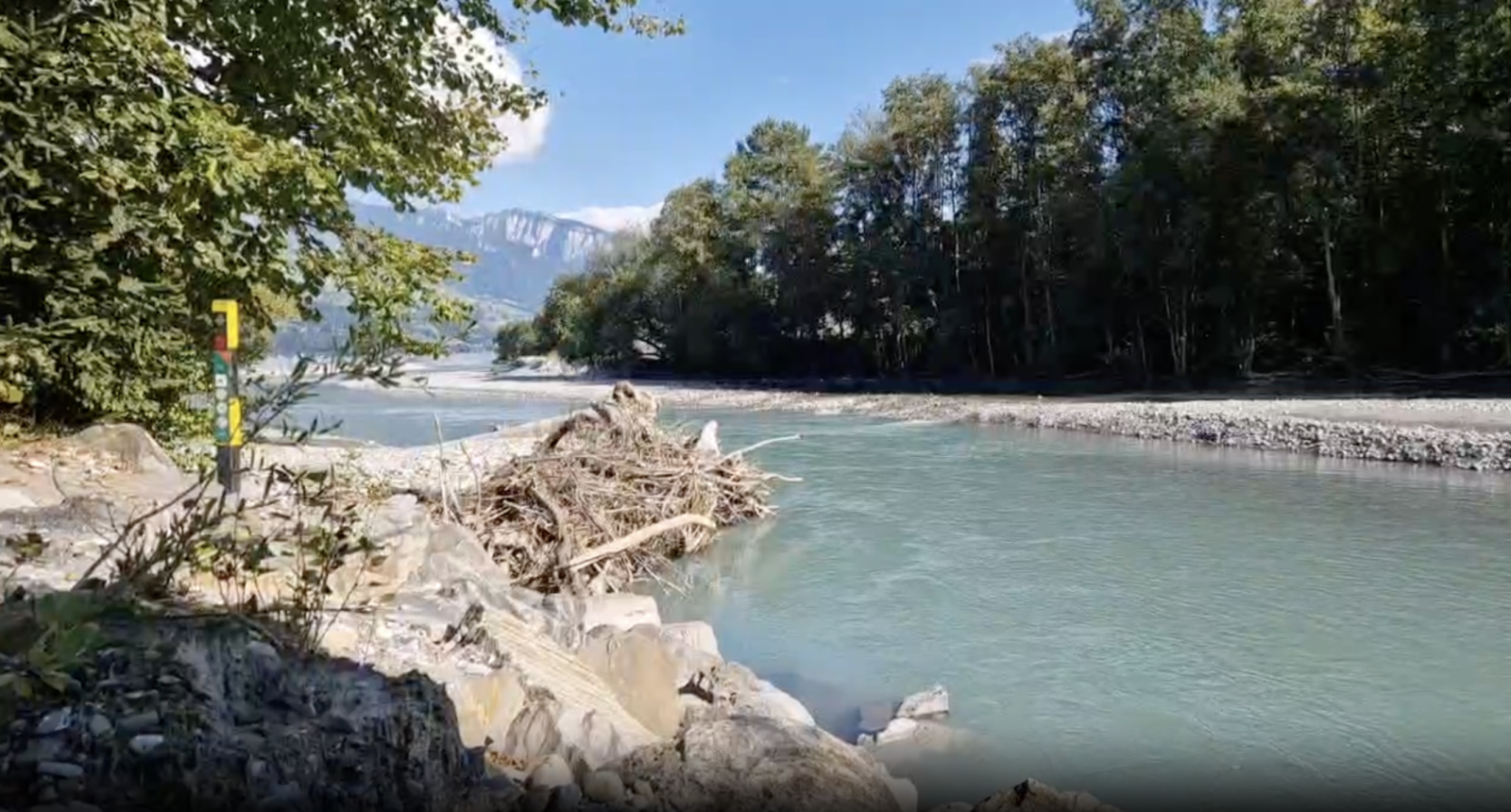Description
The Kanderdelta is an artificial delta created in the 18th century. Before its construction, the Kander River bypassed Lake Thun entirely. The river deposits substantial amounts of gravel into the delta and the lake, necessitating regular gravel extraction. At the same time, these gravel banks have become one of the few remaining breeding sites for the Prundăraș gulerat mic in Switzerland.
The delta features a dynamic mix of floodplain forests, still and flowing waters, gravel banks, and steep riverbanks, forming a unique and valuable natural habitat - a rarity in Switzerland. This exceptional ecosystem lies close to the city of Thun, resulting in conflicts between recreational use and conservation efforts. While the lakeshore is accessible year-round, there are even dedicated barbequing areas at the outer edge of the delta. A ranger frequently patrols the area, offering useful information to visitors.
Although the Prundăraș gulerat mic is the region's flagship species, over 200 bird species have been recorded here. The steep banks provide nesting sites for Pescăraș albastru and Pescărel negru. In the floodplain forests, breeding birds like Ciocănitoare pestriță mică, Cuc, and possibly Șoimul rândunelelor, which can be observed from April to September, find their habitats. Grangur and Privighetoare roșcată are relatively common, possibly you might see a Stârc de noapte or Egretă mică. Stârc galben has also been observed.
Waders and waterbirds use the delta as a stopover during spring and autumn migrations. The Fluierar cu picioare verzi is among the most frequent visitors. Other common sightings during migration seasons include Fluierar de mlaștină, Fluierar de zăvoi, Prundăraș gulerat mare, and Fugaci mic. Less common species like Pietruș and Fugaci pitic make appearances. During these times, the reeds are utilized by Boicuș and Erete de stuf.
In spring, the delta additionally hosts Fluierar cu picioare roșii and Bătăuș, as well as Culic mic and Pescăruș cu cap negru. Inland, Codroș de pădure finds refuge in the floodplain forest. Later in spring and into summer, the Pitulice sfârâitoare appears here, and over the lake, migrating Chirighiță neagră can be spotted. Exceptional sightings include its relatives, the Chirighiță cu aripi albe, Chirighiță cu obraz alb, Chiră mică, Pescăriță râzătoare, and Chiră de mare.
In late summer, the rare Nisipar is occasionally reported, while from September through May, Călifar alb can be seen resting on the lake. Autumn brings irregular sightings of Ploier argintiu, followed later by the more frequent Fugaci de țărm. From winter to spring, Rață lingurar and Rață fluierătoare rest on the lake, but rarer birds are also possible, as one sighting of Rață de ghețuri proves.
The Kanderdelta is also a hotspot for rare waders. Eight confirmed sightings of Scoicar have been recorded in April and June. Other notable species include Fugaci mare, Ciocîntors, Prundăraș de sărătură, and Pasărea ogorului. Additional rarities such as Fâsă de câmp, Cufundar mare, Frunzăriță galbenă, Ploier auriu, Ciocârlie de stol, Notatiță, Corcodel de iarnă, Rândunică roșcată, Lup de mare mic, Lup de mare atlantic, Pescăruș cu coadă scobită, and Becațină mică have also been observed.
Details
Access
The Kanderdelta is easily accessible by bus from Thun (stop: Einigen, Kanderbrück). A parking lot is also available a few hundred meters away (Press P on the map). The area can only be explored on foot via a narrow path. This trail is not marked on maps and leads along the strictly protected Kander (1), where the Prundăraș gulerat mic nests on the gravel banks, through floodplain forests, and past a still water body created by gravel extraction (Unteres Kandergrien), which is often visited by herons (2), to the delta (3).
Depending on the water level, the 30 to 40-meter-wide shoreline strip of the delta can be walked on. However, it’s obviously preferable not to disturb or approach any wading birds that might be present. On the other side of the Kandergrien, there is a meadow for lounging (4) with a good view of the lake, and a kiosk operates there during the warmer months.


